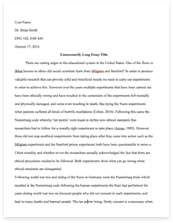A comparison of “Child of the Americas” and “American”

A limited time offer! Get a custom sample essay written according to your requirements urgent 3h delivery guaranteed
Order Now“Child of the Americas”, a poem by Aurora Levins Morales describes the perspective of a Puerto Rican woman that has a very diverse ancestral background who has immigrated to the United States. “Amerícan”, on the other hand, is a more so broader depiction of a very similiar concept to that of “Child of the Americas”. The poems seem to have many distinct similarities, including their common overall theme of the narrators love for who they are and where they live.
One of the first similarities that is quite obvious is the common narrator in both poems. It seems as though the narrators in both poems are mirror images of each other. “I am a Puerto Rican Jew”(Line 5, p. 954, The Bedford Introduction to Literature, 7th ed.) stated the narrator of “Child of the Americas.” “Hidden inside the Puerto Rican mountains”(line 3, p. 956) and “singing to composer pedro flores”(Line 13, p. 956) who is a Puerto Rican composer listened to by Puerto Rican mountain farmers, are quotations that hint towards the narrators Puerto Rican background in the poem “Amerícan.” So the narrators share a common background that is not only restricted to Puerto Rican ancestry. The narrator in “Child of the Americas” said that she was “a child born of many diaspora, born into this continent at a crossroads.” The narrator in the second poem says that his/her self proclamation AmeRícan includes “european, indian, black, spanish” and various other backgrounds, and also says that this is his/her’s “second land.” The narrators from both poems share a Puerto Rican and multi cultural background as well as the status of being an immigrant in the United States.
Not only are the narrators similar but, also the settings that are referenced to in both poems seem to be quite similar. Both poems hint to the fact that the narrators live in New York. The quotations “Walking plena-rhythms in new york, strutting beautifully alert,” (Line 32, p. 957) from “Amerícan” and “a product of the ghettos of New York I have never known”(line 6, p. 954) from “Child of the Americas” are the only two clues hinting to this theory. Of course, nothing in either poem definitively states that the narrators live in New York, it is only implied. They also seem to share the a common birthplace of Puerto Rico or somewhere close to it in the Carribean.
The biggest similarity that both narrators share is their overall happiness and proudness of who they are and where they live. In the poem “Amerícan” the narrator describes how he/she sees their America, “defining the new america, humane america, admired america, loved america, harmonious america, the world in peace.”(line 50, p. 957). Its obviously a very approving and happy description of the U.S.. The narrator then goes on to say “for I love this, my second land, and I dream to take the accent from the alteration, and be proud to call myself american, in the u.s. sense of the word Amerícan, America!” Which, again, is a very pleased and content response in regard to where the narrator lives, also the word America finally is capitalized and followed by an exclamation mark. Emphasizing the happiness the narrator feels about the country that he/she lives in (he/she is used quite often in describing the poem Amerícan due to the fact that a specific gender is never mentioned, though it is most likely a female narration).
The narrator in “Child of the Americas” depicts her love for where she lives in the quote “I am new. History made me. My first language was spanglish. I was born at the crossroads and I am whole.” The short phrase “I am whole” is what really shows her contentment and happiness for her new country. Although both narrators are happy about where they live, they make sure they stay true to who they are and are proud of their multi cultural background. They both also seem to have the idea that people like them, Amerícans if you would like, make the country they now call home a “new america, humane america, admired america, loved america, harmonious america,” and a “world in peace.”(line 50, p. 957).
(All quotes were taken from the The Bedford Introduction to Literature, 7th ed.)










